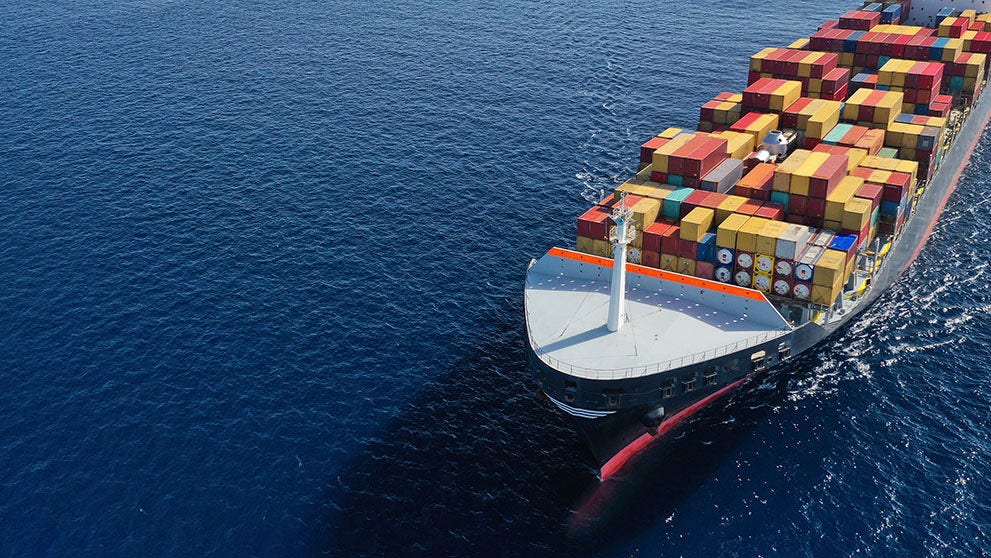
Shipping internationally for the first time? Have you considered how to make sure your shipments clear customs smoothly? Every delay at customs can lead to late deliveries for your customers. This article covers what US shippers need to know to be ready for the customs clearance process.
Navigating customs clearance can be complicated. As a shipper, you play a key role in making sure your shipments get through Customs and Border Protection (CBP) without delays or mistakes. At DHL, we help customers manage customs paperwork and requirements every day. In this guide, we’ll share the most common challenges for first-time US shippers and explain how to avoid costly mistakes.
The two main challenges for first-time shippers
Customs Duties and Taxes
The first challenge is costs. Many new US shippers don’t realize they must pay import customs duties and taxes to government agencies. It’s a common mistake to think that paying the shipping company covers everything, but duties and taxes are separate charges set by the country you’re shipping to, not by DHL Express.
To make things easier, DHL Express offers MyGTS (My Global Trade Services), a dedicated portal designed to help with international shipping. MyGTS includes a landed cost calculator so you can estimate the total shipping cost, including transportation, customs charges, duties, and taxes. All before you send your shipment. Understanding these expenses up front helps your business stay on budget and avoid surprises.
Information & Documentation
The next hurdle is all the information and shipping documents required by customs authorities. This can feel overwhelming for first-time US shippers, especially if you’re sending packages to countries with strict or complex rules. The documents you need can vary widely depending on your product—some items like textiles or cosmetics might need special licenses or permits. That’s why it’s important to research exactly what paperwork is needed for your specific goods, origin, and destination.
As e-commerce grows, customs authorities, including US Customs, are moving away from paper forms and adopting digital, data-driven processes for faster and more secure clearance. It’s more important than ever to provide complete and accurate information, especially on your commercial invoice, when preparing shipments.
What happens if you provide incorrect information or documentation?
If you, as the shipper, don’t provide all the right information and documents, or give incomplete or incorrect data on Commercial Invoices or Waybills, the best case is that your shipping provider will notice the missing data and pause your shipment in order to alert you. This will delay your delivery.
On the other hand, if the shipping company doesn’t spot your missing information, your shipment may be held by Customs authorities until all the correct information and documentation are provided. You may also be charged storage fees until the customs clearance process is completed. Either way, your end customer, or receiver, will experience delays in getting their goods, may face extra delivery costs, and could become frustrated with both you and the shipping company. That’s something everyone wants to avoid.
The most important information is the most basic
Particularly important is to give correct, complete shipper and importer (i.e., your customer) information on the Commercial Invoice. The importer information, including contact details such as their full name, address, cell phone number and email address, is vital. If there is a hold up in the destination country, the shipping company (or even Customs authorities) may need to be able to contact the importer. If they can’t easily reach the importer, the import Customs Clearance of the goods may be delayed, or the shipment may even be returned to you.
Always give a proper Goods Description
An accurate description on the Commercial Invoice of the exact contents of your shipment – the Goods Description – is also very important to ensure a smooth Customs Clearance process. Customs authorities use this information to determine if your shipment could pose any security or safety risks, based on the shipment data. The goods description is also essential to determine other key elements, such as the Harmonized System (HS) code – which is relevant for the amount of Import Customs Duties and Taxes to be paid.
When providing the Goods Description on the Commercial Invoice, you must be detailed and precise. You should indicate what the goods are, for which purpose the goods are used, and what they’re made of. For example, instead of “Apparel”, write “Women’s T-shirt made of 100% cotton”. You’ll find more examples of good and bad descriptions in our detailed Customs Guide.
HS Codes and how to find the right one
In addition to complete and accurate Goods Descriptions, another key element is for shippers to indicate the respective Harmonized System (HS) Code on the Commercial Invoice. The HS Code determines the import Customs duty rate you’ll pay, depending on what you’re shipping, and also determines possible import restrictions, and if licenses are required.
The Harmonized System (HS) code is an international standard developed by the World Customs Organization (WCO). Each import country has its own table of duty rates associated with each HS Code – and there are a lot of them!
MyGTS has a “Find Tariff Codes” tool to help you find the right HS codes to classify your products. You can search for HS codes using keywords or the code directory.
We also offer a service that allows you (the shipper) to pay for Import Customs Duties and Taxes on behalf of the importer (receiver). If you pre-select to pay all DHL charges when booking a shipment (on behalf of your customers/receivers of the goods), then DHL will outlay the Import Customs Duties and Taxes and charge them back to you (together with other Customs-related charges, if applicable). This service is known as the DHL Duty Tax Paid (DTP) Billing Service – please contact your DHL Express representative for more information.
No shipper enjoys paying duties and taxes, but don’t be tempted to use the wrong HS code to get a cheaper duty rate. If you’re caught, you’ll have to pay the correct rate, and you could be fined by customs authorities, or even face additional penalties.
Be transparent about the value of your shipment
Another way some shippers try to cut their Duties and Taxes costs is by undervaluing their shipment. We strongly advise against this!
It’s essential that you declare on the Commercial Invoice the true value of the goods sold, with 100% transparency. Depending on the Incoterm you use, you also need to include freight charges and insurance.
If customs authorities suspect your goods are undervalued, your customer will be asked to provide proof of payment or a receipt for the items purchased. This allows customs to compare the declared value with the actual price paid on the commercial invoice.
If undervaluation is confirmed, customs authorities will charge you the correct amount of import duties and taxes based on the real value of the goods, and they may also fine you or even request to audit your previous shipments.
Be ready to prove your identity
Customs authorities now often require multiple forms of identification from either the shipper, the receiver, or both. For example, they might request a receiver’s driver’s license, passport number, or a copy of their ID. Some countries even ask receivers to use an app on their smartphone to verify their identity.
If this applies, it’s best for you as the shipper to collect the importer’s identification details in advance and provide them with the shipping documents. This will help speed up customs clearance at the destination and reduce any delays.
Authorities are cracking down on illegal importers, so providing accurate identity details protects both your business and your customers.
You may be asked to register and collect VAT
If you sell online to customers in other countries, you may be required to register for VAT (Value Added Tax) in the buyer’s country and declare it on the commercial invoice using your VAT registration number. In these cases, import VAT must be paid when shipments clear customs, though you may be able to claim it back later. Some countries allow sellers to collect VAT upfront and pay it directly to authorities using a vendor collection model, a trend that’s growing in regions like the European Union and Australia.
For example, when selling online to customers in the EU, you can either use DHL’s Duty Tax Paid (DTP) Billing Service, where DHL pays import VAT and charges it back to you, or register with the Import One Stop Shop (IOSS) system, which lets online sellers collect and report VAT at the time of purchase.
Sounds complicated? MyGTS makes it simpler
International shipping can seem overwhelming with all the customs paperwork and regulations involved. DHL Express’ MyGTS (My Global Trade Services) is a free, user-friendly platform to help you manage every aspect of cross-border shipping.
You can use MyGTS to find HS codes, estimate landed costs for your shipments, and check each country’s import restrictions before you ship. This helps make sure your packages reach customers on time and without issues at customs.
With MyGTS, your business can confidently expand into new global markets. Register here.
Our top tips for first-time cross-border shippers
Do your research
Look up import costs related to duties and taxes. Check what documents and information are required for your specific product. Review import restrictions for your product in each country where you plan to ship.
If you get these steps right the first time, you’ll avoid future problems and create a better experience for your customers.
Commercial Invoice DATA QUALITY
Last but not least, always provide complete and accurate commercial invoice details when creating your shipment. This helps avoid delays caused by missing data, such as:
Shipper and receiver information: Full name, address (street, number, city, country, postal code), and contact details (phone number and email).
Identification number: If required, include an ID number for the shipper or receiver, such as a VAT, EIN, or EORI number.
Goods description: Describe your products using clear, detailed language.
HS code and country of origin: List the complete harmonized system code and where the goods were manufactured.
Values and currency: Provide the item value and a breakdown of costs (insurance, freight, packaging), along with the transaction currency.
Weight, unit, and quantity: Give the gross/net weight, unit (for example, KG), and the number of items.
Incoterms and place: Specify the Incoterm and the applicable location.
Proof of origin statement: Include this if your shipment qualifies for preferential duty rates.
Reason for export: State the export reason, such as permanent, repair and return, temporary, or gift.
- Other requirements: Check for any other necessary documents, like export/import licenses or compliance with special government rules.
Providing complete and accurate information when you create your shipment will help prevent delays at customs clearance.
When you make shipping easy for your customers, you build trust and encourage repeat business.
DHL Express operates in more than 220 countries and territories, and our team can help you navigate cross-border shipping and customs requirements with confidence.
For more information, download our Global Customs Customer Guidelines.








